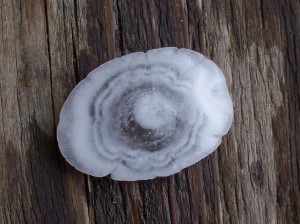The Life Cycle of Hail
By Michael FaginGeneral InfoComments are offHail originates as tiny cloud droplets with diameters of 0.02 mm. After large masses of these droplets are sucked into updrafts, they elevate to heights that are much colder than the surface. Their rapid transport and the lack of ice nuclei in their paths cause them to cool below 0°C without freezing (supercool.)
Soon, additional cooling freezes them into ice particles. After this change in density, they may descend down the atmospheric tunnel created by the updraft and gather supercooled cloud droplets. If these conditions for growth persist, the nuclei and layers of freezing droplets may grow to between one and five millimeters in diameter. This new construction, called graupel, has the consistency of a tiny snowball.
Updrafts can recast graupel upward through more supercooled droplets and ice particles and thus resume the cycle of formation. The larger this nascent hail grows, the chance that it will collide with and assimilate ice particles increases exponentially. Through the accretion of supercooled droplets and the deposition of ice particles, hailstones the size of marbles or larger may form, depending on the strengths and durations of their updrafts and the directions of the winds that crafted their formations. These now noteworthy hailstones have grown large enough to collide with and stick to other hailstones; and with the assistance of increasingly common impacts with supercooled droplets, they may freeze together tightly enough to remain adjoined until reaching the surface.
Hail can take on many sizes and infinite shapes. It can appear nearly spherical, spiky, lenticular or irregular, depending on the ambient conditions during its formation. Beyond the availabilities of ice nuclei and cloud droplets, and the presence of vertically-oriented winds, the electromagnetic force also participates in hailstone formation, as can be observed in cross-sections. The largest hailstone ever recorded fell in June of 2003 over Aurora, Nebraska and measured 17.8 cm in diameter. See photo of hail below with photo credit to wikipedia.org
Story written by Meteorologist Geoff Linsley

